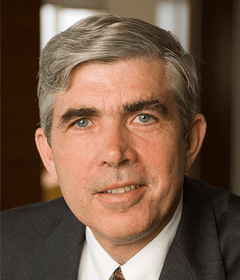The year ahead – what to expect from major markets in 2021

Investors have had to endure a lot in 2020, with many asset classes initially sent reeling by the Covid pandemic, before rallying in the face of an unprecedented series of stimulus packages from central banks and governments around the world.
From negative oil prices to record levels for gold and US equities, 2020 has been anything but run of the mill for investors.
With a new President set to take the helm in the US, Brexit, environmental concerns and sprawling government debt piles, there are lots of new challenges for investors as we head in to 2021, but also lots of opportunities.
Below, Franklin Templeton’s specialist investment managers look at what is facing major asset classes next year (each day different specialist investment managers tackle different asset classes)
Global fixed income – Western Asset (Ken Leech, Chief Investment Officer)
Even as Covid resurgence brings more cautious economic behaviour, and slack in the global economy remains dangerously high, markets are trying to calibrate to a future that should look meaningfully different from the present. Our strategy, simply put, has been to own assets that would benefit from this calibration to a brighter future, while pursuing complementary strategies that would help mitigate the potential setbacks on the road to that future.
We thought all the major risk sectors of fixed-income were badly oversold in the fear that followed the global pandemic. We moved to add investment-grade corporates primarily and noncyclical high-yield credit, with a view that specific policy support would reinvigorate these sectors even in what might well prove to be a very extended recovery. We recently have added to specific positions in both the reopening sectors in high-yield and some areas of structured products.
Going forward, we feel markets will extend their optimism more broadly in these areas. We intend to rotate away from more fully valued investment-grade and high-yield securities very selectively into those aforementioned sectors. The other area where we are optimistic is emerging market (EM) debt, which we believe is a highly undervalued space. Despite the enormous medical and fiscal challenges EM countries face, the steadily increasing probability of a global economic recovery will entice investors into EM debt.
The historically unprecedented asymmetric nature of monetary policy, particularly in the US, will keep interest rates ultra-low for years. Central bankers from developed countries around the world have been extremely explicit in guiding markets for a “lower-for-longer” rate environment. Concerns over higher, more permanent levels of unemployment are first and foremost. “Scarring” – the inability to easily regain employment or career traction – will persist. The monumental workforce change of utilising technology will also slow labour force reabsorption.
The combination of truly extraordinary news on the vaccine front, reasonable current economic momentum and probable further fiscal help should support fixed-income spread products. The Fed’s determination to prevail against strong disinflationary forces is encouraging, even if the task will prove difficult. This “very low, for very long” commitment also enhances the prospects that Treasury duration can be a useful complementary portfolio asset.
Sustainable Investing and ESG – Clearbridge Investment (Mary Jane McQuillen, Head of Environmental, Social and Governance Investment)
We expect many of the drivers of strong returns for stocks with strong sustainability characteristics to continue in 2021. These include efforts to fight climate change by lowering carbon emissions.
There is some expectation a Biden administration will be supportive of renewable energy within the federal scope; this appears likely, although it is not an essential part of our investment case there, which rests mainly on much larger state and corporate commitments.
We believe renewable energy will enjoy long-term secular growth as the world transitions to a less carbon-intensive economy and as solar and wind power has become more cost-competitive with fossil fuels. We are constructive on this growth in both residential applications and utilities.
The push to lower emissions and increased energy efficiency will continue to support the growth of electric vehicles (EVs) and their evolving supply chains. EVs contain more and more electronic content, for example, and should continue to grow demand for makers of electrical connectors.
We are also watching newer technologies, such as green hydrogen, lithium-ion batteries and carbon capture and storage, as they develop and potentially change the renewable energy landscape.
Transparency is increasingly a competitive necessity. Shareholders are having success pushing for more transparency and changing the landscape of what are considered industry norms. While proxy voting topics continue to focus on climate and gender, we expect a renewed focus on social equality, in particular racial equality, to feature more prominently in shareholder engagements and 2021 proxy proposals.
Another proxy topic that continues to gain a lot of attention is disclosure of annual political spending, and most investors are voting for more disclosure. This is notable because in some sense the pendulum has swung toward valuing fair business practices and transparency.
The large technology platforms that dominated returns in 2020 by supporting a stay-at-home environment should see continued strength both as this environment remains with us, and as their solutions offered to society remain innovative and valuable.
